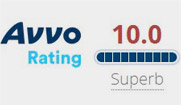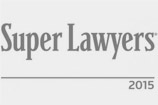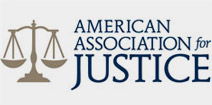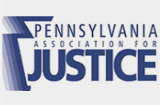
By: Laurie A. McCarthy, Esquire
On March 18, 2020, the U.S. Senate passed the U.S. House of Representative’s “Families First Coronavirus Response Act,” by a vote of 90-8, and President Trump signed the act into law the same day. While the Act is far more comprehensive, this blog addresses only the Emergency Paid Sick Leave Act and the Emergency Family & Medical Leave Expansion Act.
Emergency Paid Sick Leave Act
What It Does
Covered employers will be required to provide full-time employees with 10 days (80 hours) of paid sick leave when the employee cannot work (or telework) for circumstances related to COVID-19. Part-time employees are entitled to the number of hours of paid sick time equal to the number of hours they work, on average, over a two-week period.
The sick leave is intended for employees to use when they cannot work or telework because they:
- are subject to a government quarantine or isolation order related to COVID-19,
- have been advised by healthcare providers to self-quarantine due to COVID-19,
- are experiencing symptoms of COVID-19 and seeking a medical diagnosis,
- are caring for an individual subject to a quarantine order or self-quarantine,
- are caring for children if schools are closed or their caregivers are unavailable because of a public health emergency, or
- are experiencing substantially similar conditions as those specified by the Secretary of Health and Human Services
Who Is Covered?
Local, state, and federal government employees, employees at companies with fewer than 500 employees, and employees who work under a multiemployer collective agreement and whose employers pay into a multiemployer plan are eligible for the new sick leave benefits.
Eligibility
All employees, regardless of length of employment are eligible for the leave.
Rate of Pay
Employers must compensate employees for any paid sick time they take at the higher of: (i) their regular rate of pay, (ii) the federal minimum wage, or (iii) the local minimum wage.
- Payments are capped at $511 per day and $5,110 in the aggregate.
- Employees absent to care for a sick family member or a child unable to attend school are compensated at two-thirds of the rate they would otherwise receive, capped at $200 per day and $2,000 in the aggregate.
Employers with Existing Leave Policies
The paid sick leave allotment provided for in the emergency legislation is in addition to whatever sick leave is already offered by employers (including subject to state or local requirements).
- An employer may not require an employee to use other paid leave provided by the employer to the employee before the employee uses the paid sick time under the act.
Tax Credits
Each quarter, employers subject to the requirement are entitled to a fully refundable tax credit equal to 100 percent of the qualified paid sick leave wages paid by the employer.
Exemptions
- Employers of employees who are healthcare providers or emergency responders may elect to exclude such employees from eligibility for paid leave. (The act does not define the terms “healthcare provider” and “emergency responder.”)
- The U.S. Department of Labor (DOL) is empowered to exempt small businesses with fewer than 50 employees under certain circumstances.
Effective Date
This Act and the requirements under this Act, shall take effect not later than 15 days after the date of enactment, and will expire on December 31, 2020.
Emergency Family and Medical Leave Expansion Act
What It Does
The legislation provides 12 weeks of job-protected paid leave for employees who are unable to work (or telework), due to the need to care for a son or daughter, under 18 years of age, if the schools are closed, or their daycares are unavailable because of a public health emergency. This is the only reason that this form of leave is permissible under the Emergency Family & Medical Leave Expansion Act.
Who Is Covered?
The act applies to government employers and employers with fewer than 500 employees.
Eligibility
This leave benefit covers employees who have been working for at least 30 calendar days.
Rate of Pay
Pay rates are provided as follows:
- After 10 days, employees are paid at two-thirds of their regular rate.
- Employees may use accrued personal or sick leave during the first 10 days.
- Payments made to employees for this type of leave are capped at $200 per day and $10,000 in the aggregate.
Tax Credits
Each quarter, employers subject to the requirement are entitled to a fully refundable tax credit equal to 100 percent of the qualified paid Family and Medical Leave Act (FMLA) wages paid by the employer.
Exemptions
- Employers of employees who are healthcare providers or emergency responders may elect to exclude such employees from eligibility for paid leave. (The law doesn’t define the terms, “healthcare provider” and “emergency responder.”)
- The U.S. Department of Labor (DOL) is empowered to exempt small businesses with fewer than 50 employees in certain circumstances.
Effective Date
This Act and the requirements under this Act, shall take effect not later than 15 days after the date of enactment, and will expire on December 31, 2020.
The Law Firm of DiOrio & Sereni, LLP is a full-service law firm in Media, Delaware County, Pennsylvania. We strive to help people, businesses and institutions throughout Southeastern Pennsylvania solve legal problems – and even prevent legal problems before they occur. To learn more about the full range of our specific practice areas, please visit www.dioriosereni.com or contact Laurie A. McCarthy, Esquire at 610-565-5700 or at lmccarthy@dioriosereni.com
Like what you see? Join our mailing list












